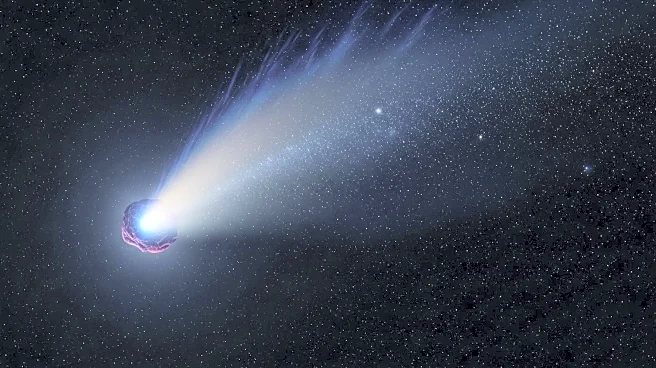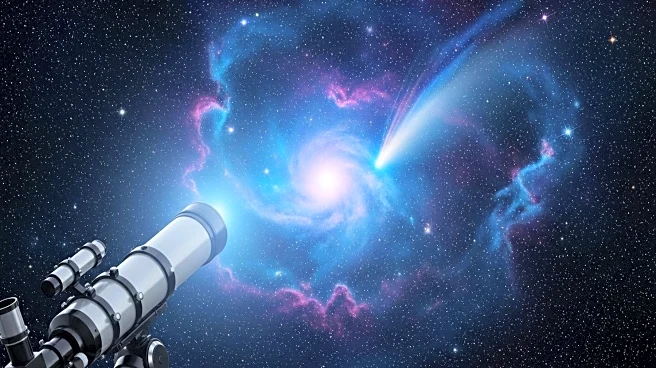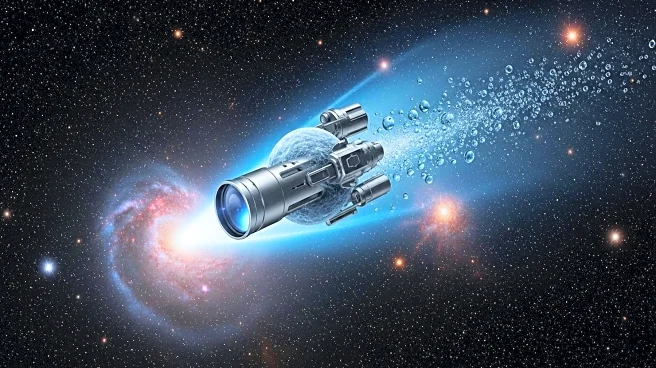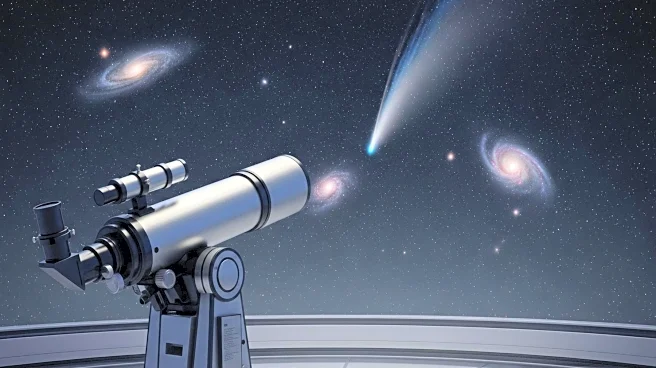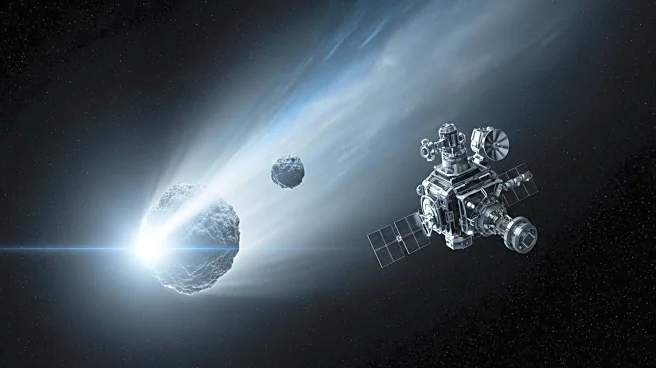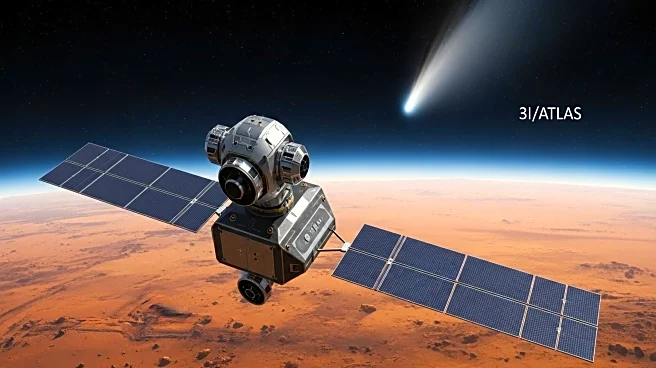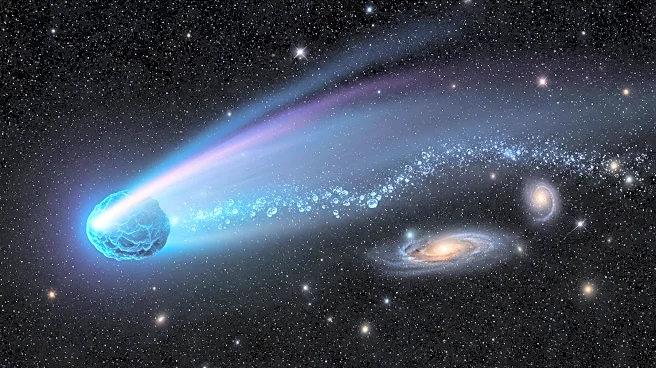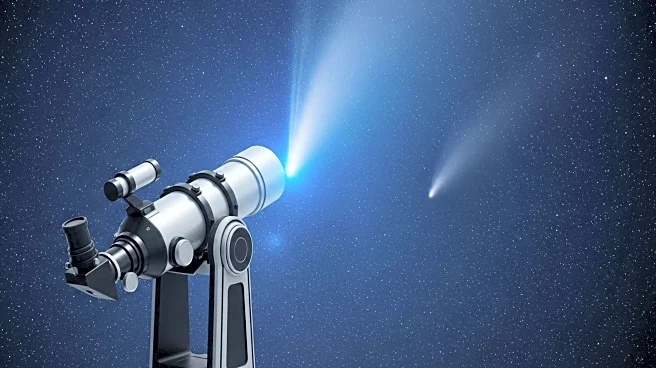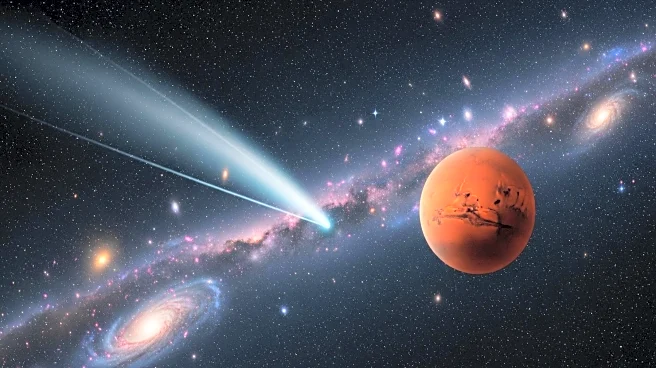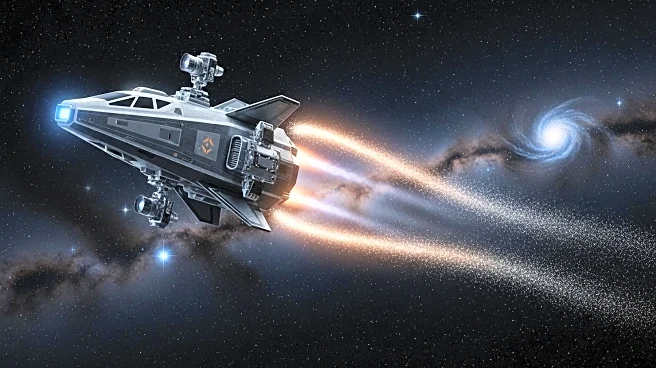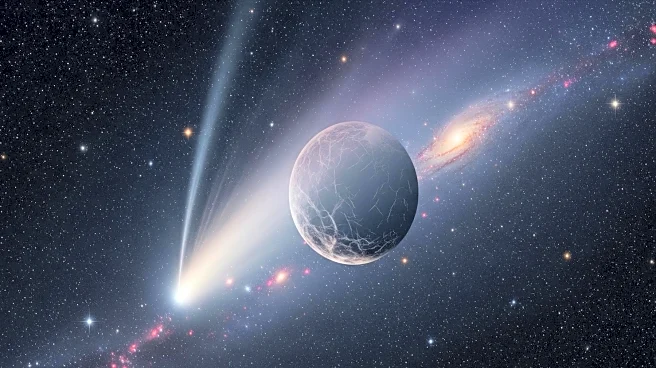What's Happening?
The interstellar comet 3I/ATLAS, discovered on July 1, 2025, by the ATLAS telescope in Chile, is releasing water vapor at an extraordinary rate, even at a distance of about 3 astronomical units from the Sun. This comet, which originated from outside the Solar System, is spewing water at approximately 40 kilograms per second, akin to the output of a fire hose. Observations indicate that 3I/ATLAS has a large nucleus and is rich in carbon dioxide and water ice, but low in carbon monoxide. The comet's CO2-to-H2O ratio suggests it formed in a carbon-rich environment or was subjected to intense heating before being ejected from its home system.
Why It's Important?
The detection of water vapor from 3I/ATLAS at such a large distance from the Sun challenges existing comet models and provides new insights into the behavior of interstellar comets. This discovery suggests that the ingredients for life's chemistry are not unique to our Solar System, highlighting the potential for life-building compounds to be distributed throughout the galaxy. The comet's unusual composition and activity offer valuable data for refining models of comet and planet formation.
What's Next?
Scientists will continue to monitor 3I/ATLAS as it approaches perihelion in late October 2025, with observations planned by ESA's JUICE mission and other telescopes. The ongoing analysis aims to map the comet's behavior and outgassing rates, providing further insights into its composition and the conditions of its origin. This research could reshape our understanding of how planetary systems form and deliver water across space.
Beyond the Headlines
The study of 3I/ATLAS underscores the diversity of planetary system chemistry across the galaxy. By comparing this comet with others, scientists can gain insights into the conditions of different stellar nurseries and the potential for life beyond our Solar System. The comet's activity and composition may inform theories on interstellar transport of volatiles and the frequency of water-bearing bodies.
